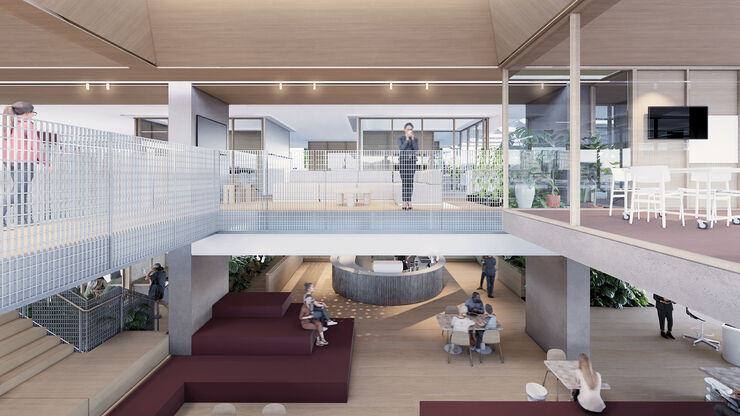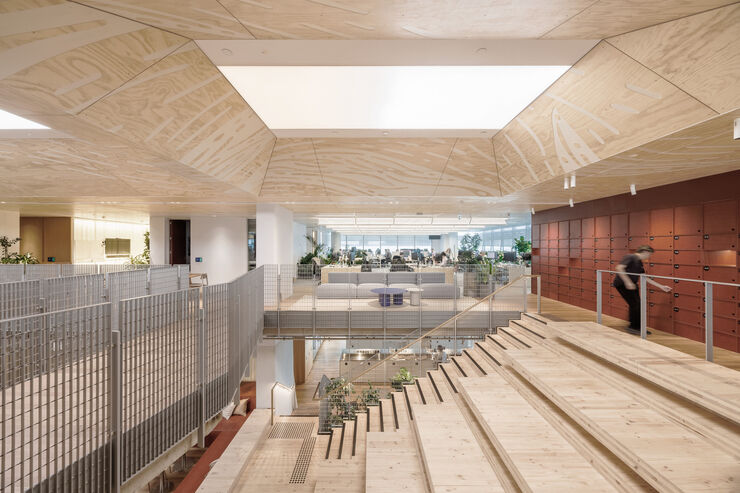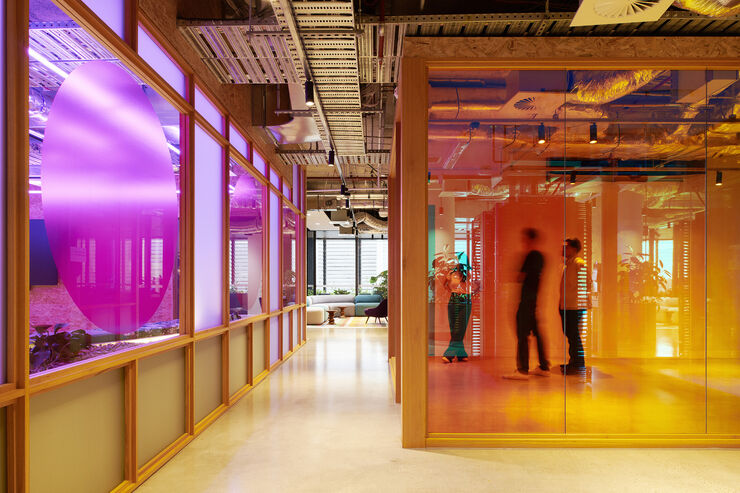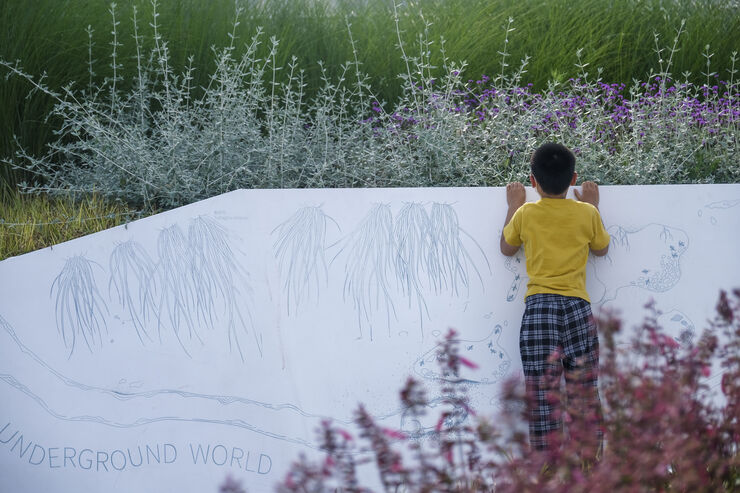From debris to design: A new approach to circularity
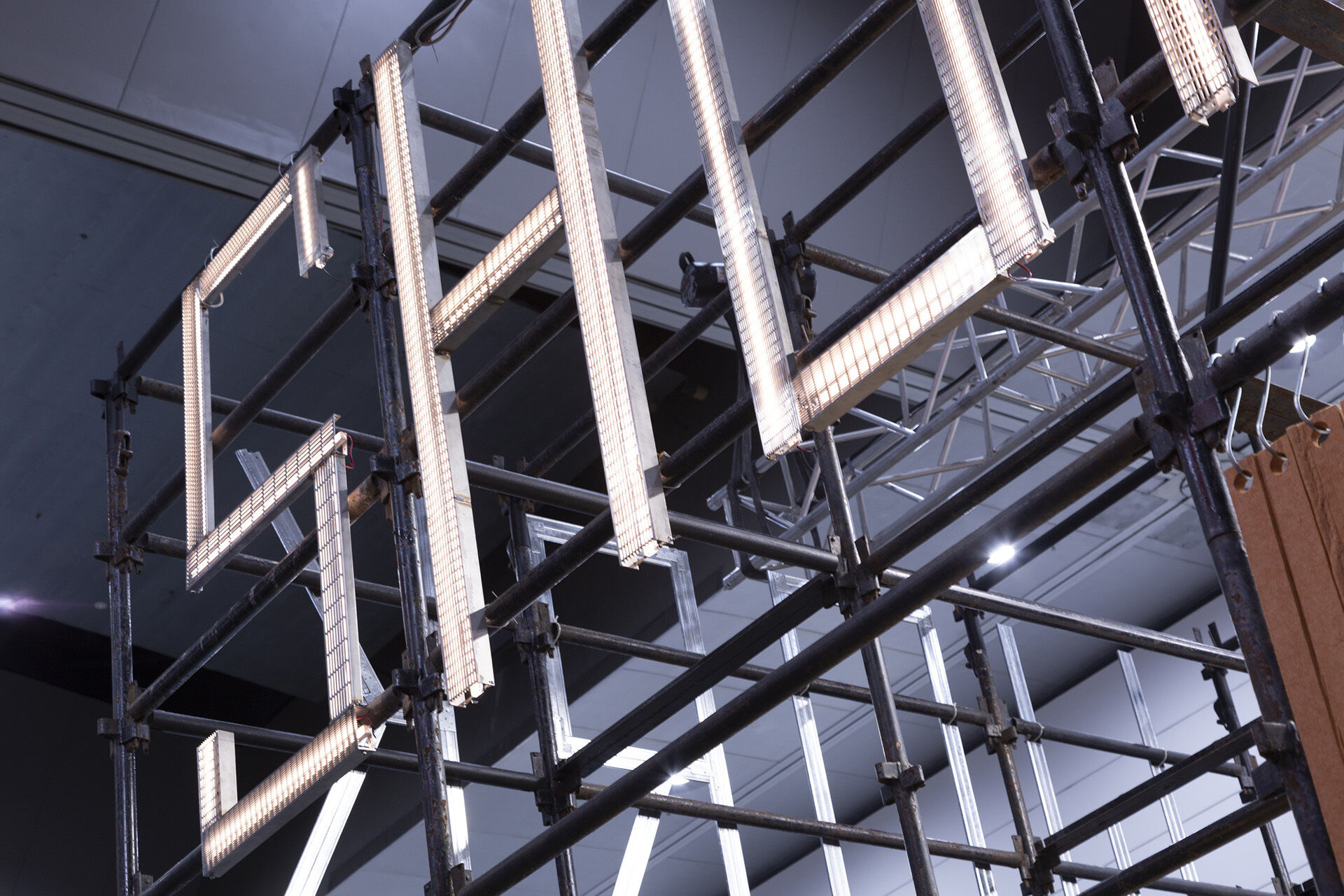
By Sian Willmott, Sustainable Design Leader and Prue Pascoe, Associate, Hassell
A live case study in circular design and systems thinking, Workshop, a temporary installation within the ArchiBuild Expo in Melbourne, Australia, became a platform for shifting industry mindsets.
Conceived as a space to engage, educate, and inspire, Workshop is more than a spatial solution. It shows how even short-term builds can catalyse long-term change.
A NEW DEFINITION OF AESTHETICS
Aesthetics were never compromised, but beauty wasn’t defined by newness or novelty. Instead, the project sought to show that circularity can be architecturally expressive — refined, intentional, and future-focused.
Rather than defaulting to standard exhibition materials or custom-built elements, the team prioritised reuse, rental, and material borrowing. Every choice was guided by a deliberate commitment to circularity: upcycling materials destined for landfill, borrowing mid-production components with a clear return path, and utilising existing products that could seamlessly re-enter ongoing production cycles.
A COLLABORATIVE MODEL FOR A CIRCULAR ECONOMY
One of the most compelling aspects of the project was its collaborative nature. Partnering with material suppliers already embedded within the exhibition ecosystem enabled efficiencies in logistics, transport, and setup, while reinforcing shared values around waste reduction and closed-loop thinking.
“While Workshop stood for only three days, its impact will last far longer. Thanks to Hassell’s vision and skill, it left behind a blueprint for building with purpose, proving that sustainable design can be as inspiring as it is responsible.”
— Ash North, Event Director, ArchiBuild Expo
The installation featured a diverse palette of upcycled and borrowed materials, each carefully selected to demonstrate circular principles in action. Highlights included repurposed Stormtech offcuts transformed into signage and lighting by designer Ed Linacre; brick seating made from Kraus Bricks’ surplus stock, later returned for use in their showroom; and fabric and solid surface offcuts from Kvadrat and Trengosa, which were rehomed for further upcycling.
Key elements such as SaveBOARD, Autex acoustic panels, and Durra Panel were borrowed mid-production and returned to their suppliers for reintegration into manufacturing. Even rigging, scaffolding, and seating were leased or borrowed from multiple enterprises, reinforcing a no-waste, closed-loop approach throughout.
While Workshop lived for just three days, its legacy lives on through the ideas and approaches it brought to life. It offered a blueprint for how circular design can be more than a sustainability add-on — instead becoming a catalyst for creativity, efficiency and shared value.

Scan this QR code with your phone to follow Hassell on WeChat.
